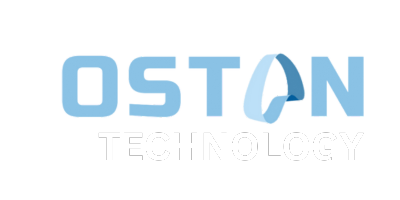The Rise of Microlearning in Online Education
The rise of microlearning in online education is revolutionizing the way students engage with content. Instead of traditional long-form lessons, microlearning offers short, focused learning segments that fit into students’ busy lives. This approach not only enhances engagement but also improves retention, making it a game-changer for online education platforms in 2025. Let’s explore how microlearning is transforming education and why it’s becoming an essential tool for both learners and educators.
In recent years, microlearning has emerged as a groundbreaking approach to online education, offering a flexible and efficient way for students to engage with content. Unlike traditional learning models that require long hours of study, microlearning breaks down complex topics into smaller, easily digestible chunks. This method is particularly effective in today’s fast-paced, tech-driven world. But what exactly is microlearning, and why is it gaining traction in online education? Let’s explore how this innovative learning strategy is reshaping the way we learn.
What is Microlearning?
Microlearning refers to the practice of delivering learning content in small, focused segments. These “bite-sized” lessons typically last between 5 to 10 minutes and are designed to target specific learning outcomes. Whether it’s a quick video tutorial, a short quiz, or a brief interactive module, microlearning allows students to learn at their own pace without feeling overwhelmed. You can read more about its importance in the future of online education on EdTech Magazine.
Microlearning is especially useful in online learning environments, where students often struggle with long, monotonous lectures. By offering short bursts of information, students can absorb content without losing focus, making it a highly effective method for both young learners and adults in continuing education.
The Benefits of Microlearning in Online Education
1. Increased Engagement
One of the biggest challenges of online education is maintaining student engagement. Traditional learning models often lead to disengagement, especially when lessons are lengthy or complex. Microlearning, on the other hand, encourages active participation by delivering content in short, interactive segments. This engagement increases retention and makes learning more enjoyable.
2. Flexible Learning Paths
Microlearning is inherently flexible, allowing students to access content whenever and wherever they choose. This is particularly beneficial for working professionals or students with busy schedules. With microlearning, students can easily fit learning into their day without sacrificing other responsibilities.
3. Enhanced Retention
Studies have shown that shorter learning sessions can lead to better retention. Microlearning focuses on key concepts, allowing students to repeatedly revisit them until they are mastered. This “spaced repetition” method is proven to help learners retain information more effectively.


How Microlearning is Transforming Online Education Platforms
Online education platforms are increasingly adopting microlearning strategies to enhance user experience. Platforms like Udemy, Coursera, and Khan Academy now offer bite-sized courses that cater to diverse learning preferences. This shift toward microlearning is helping educators and content creators build more accessible and efficient learning environments.
Example: How Microlearning Works in Practice
For instance, a course on digital marketing might be divided into several micro-modules, each focusing on a specific topic like SEO, social media marketing, or content strategy. By dividing the content into manageable sections, learners can gain a deep understanding of each subject without feeling overwhelmed. This also allows students to revisit specific lessons as needed, ensuring better mastery of the content.
Why Microlearning is Ideal for Mobile Learning
As mobile learning continues to grow, microlearning aligns perfectly with the mobile-first approach of many online education platforms. Short videos, infographics, and quick quizzes are easy to consume on mobile devices, making it easier for students to learn on the go. Whether commuting, waiting in line, or taking a break, students can use their smartphones to continue their education without interruption.
While microlearning offers numerous benefits, there are challenges that educators and online platforms need to consider. Content fragmentation can be a risk if the material isn’t carefully curated. To ensure that students are getting comprehensive knowledge, it’s important to maintain a balance between bite-sized content and a coherent learning path.
Moreover, microlearning may not be suitable for every subject. Complex, abstract topics may require deeper, more comprehensive explanations that cannot easily be broken down into short segments. In these cases, blended learning approaches that combine microlearning with traditional methods might be more effective.
Conclusion
The rise of microlearning in online education is undeniably transforming the way we approach learning. Its ability to engage students, provide flexibility, and enhance retention makes it a highly effective method in today’s digital age. As more online education platforms embrace this approach, the future of learning looks brighter and more personalized than ever before.
For educators, adopting microlearning strategies can help foster a more engaging and effective learning environment, one that meets the needs of modern students. If you’re looking to enhance your own learning experience, explore microlearning courses on popular platforms and see the difference for yourself!
As both learners and educators adapt to the digital age, microlearning will continue to play a pivotal role in ensuring success. For a deeper dive into the future of microlearning, check out The Learning Network’s blog here.
You can join with us through our website: Enabling quality education – Oston Technology

